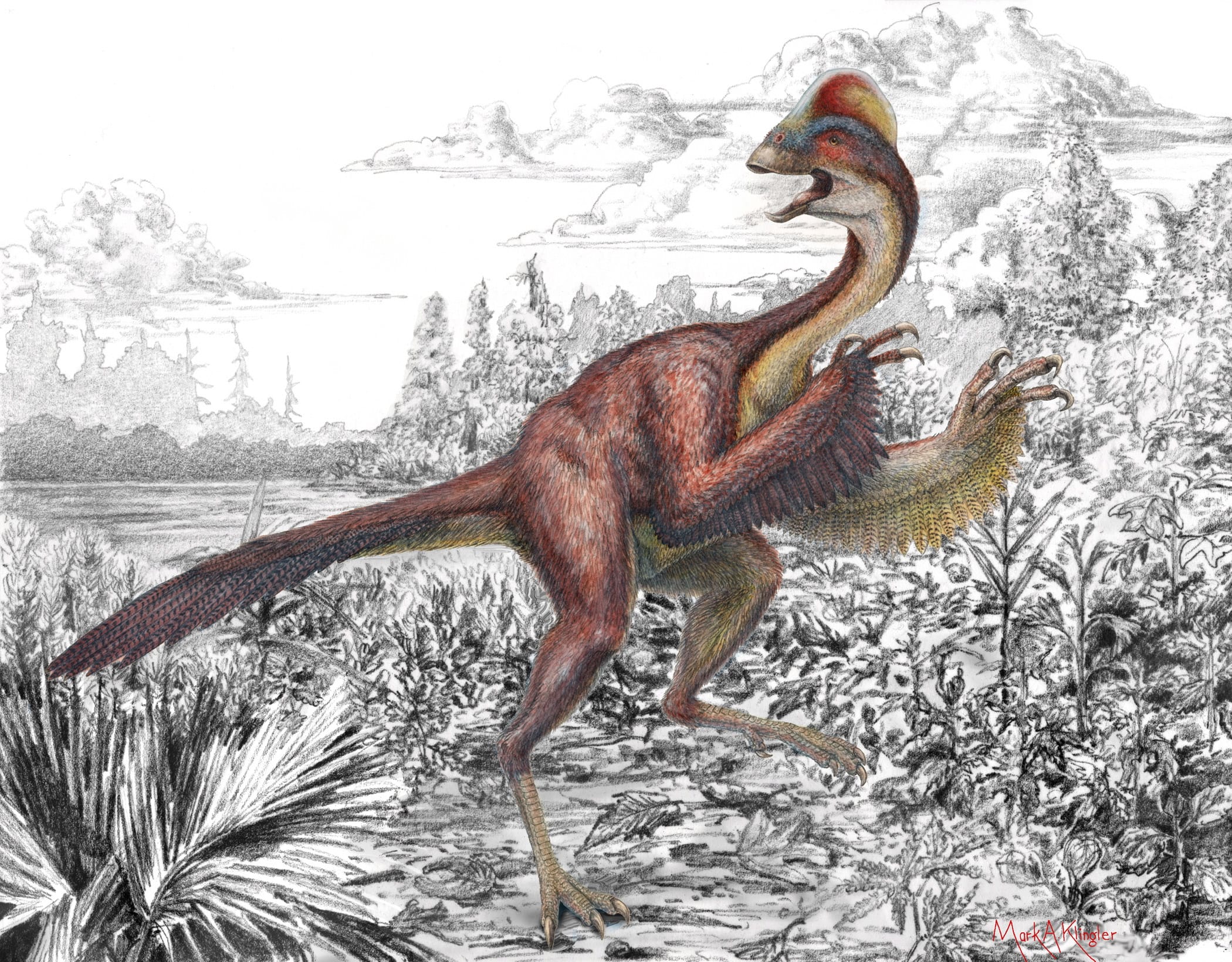Scientists have discovered a freakish, birdlike species of dinosaur — 11 feet long, 500 pounds, with a beak, no teeth, a bony crest atop its head, murderous claws, prize-fighter arms, spindly legs, a thin tail and feathers sprouting all over the place. Officially, it’s a member of a group of dinosaurs called oviraptorosaurs.
Unofficially, it’s the Chicken from Hell.
That’s the nickname the scientists have been using. It’s the term in the news release associated with the discovery. This dino-bird is not literally a chicken, or even a bird. It’s definitely a dinosaur, and it lived at the end of the Cretaceous period, from about 68 million to 66 million years ago.
“It would look like a really absurd, stretched-out chicken,” said paleontologist Emma Schachner of the University of Utah, one of the scientists describing the new species.
“It would have been a cross between a chicken and a lizard,” said Tyler Lyson, a paleontologist at the Smithsonian’s National Museum of Natural History, who excavated some of the fossils on his uncle’s North Dakota ranch in 1999.




